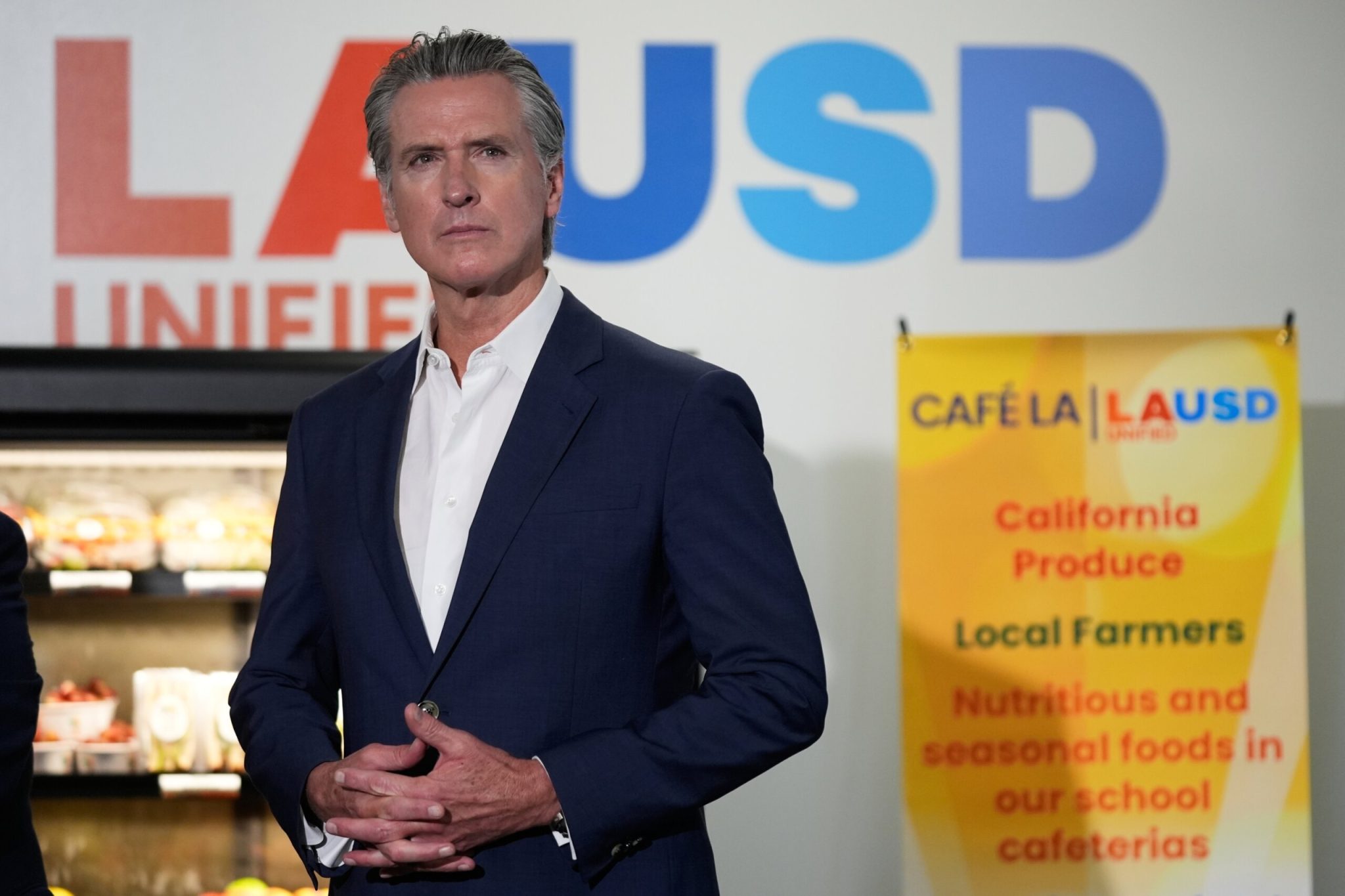SACRAMENTO, Calif. — In a groundbreaking move, California will gradually eliminate certain ultraprocessed foods from school meals over the next ten years. Signed into law by Governor Gavin Newsom on Wednesday, this legislation marks a significant effort to enhance student health and nutrition across the state.
The law mandates the California Department of Public Health to establish regulations by mid-2028 to define what constitutes ultraprocessed foods and which of these will be restricted in schools. Schools are required to begin phasing out these items by July 2029, with a complete ban on their sale during breakfast and lunch by July 2035. Additionally, vendors will be prohibited from supplying these products to schools by 2032.
During a signing ceremony held at a middle school in Los Angeles, Governor Newsom was joined by his wife, Jennifer Siebel Newsom, and various state lawmakers. He stated, “California has never waited for Washington or anyone else to lead on kids’ health — we’ve been out front for years, removing harmful additives and improving school nutrition. This first-in-the-nation law builds on that work to make sure every California student has access to healthy, delicious meals that help them thrive.”
Earlier this year, Newsom had requested specific recommendations from the Department of Public Health by April concerning limiting the impacts of ultraprocessed foods. This follows a 2023 law that banned certain artificial dyes from school meals. The growing concern about ultraprocessed foods has seen state legislatures nationwide propose over 100 bills aimed at regulating or banning harmful chemicals commonly found in these products.
Ultraprocessed foods, which account for more than half of American calorie intake, are often loaded with sugars, unhealthy fats, and excess salt. They have been linked to increased risks of various health issues, including obesity, diabetes, and heart disease, although definitive proof of a direct causal relationship has yet to be established.
Defining ultraprocessed foods is complex. The most accepted definition comes from the four-tier Nova classification system developed in Brazil, which categorizes foods based on their level of processing. Many ultraprocessed items contain industrial ingredients that are typically not found in home kitchens.
However, some processed foods, such as tofu, whole-grain bread, and infant formula, can be nutritious. The challenge lies in determining whether it is the nature of the processing or the specific combinations of unhealthy ingredients that lead to adverse health effects. Recently, U.S. health officials have emphasized the need for a consistent federal definition to better address public health concerns regarding these types of foods.
As the law takes shape, some critics argue that its scope may be excessive, arguing that it could inadvertently curtail access to nutritious foods. John Hewitt, spokesperson for the Consumer Brands Association, remarked, “For foods served in schools, food and beverage manufacturers meet the rigorous unique safety and nutrition standards set by the USDA and state agencies. The brands the association represents are committed to providing safe, nutritious, and convenient products.”
Concerns about the financial implications of this mandate are also prevalent. The California School Boards Association warns that phasing out these foods may create additional costs for school districts, as they may be required to find and purchase more expensive alternatives. According to spokesperson Troy Flint, “You’re borrowing money from other areas of need to pay for this new mandate.”
Some districts are already making strides towards healthier options in their menus. Michael Jochner, who transitioned from a chef to Director of Student Nutrition at Morgan Hill Unified School District, expressed his full support for the initiative. “It was really during COVID that I started to think about where we were purchasing our produce from and going to those farmers who were also struggling,” Jochner shared, noting that his district has eliminated ultraprocessed foods entirely, opting instead for organic, locally sourced ingredients.
He mentioned that their new menu omits sugary cereals, flavored milks, and other unhealthy options, focusing instead on made-from-scratch meals, including pizza—a common favorite among students.
Similarly, Christina Lawson, Director of Food Services for the Western Placer Unified district, reported a significant increase in scratch-made meals over the past few years. She stated that approximately 60% of their menu now consists of these dishes, drastically up from just 5% three years ago. Lawson is optimistic about the new law, suggesting it will lead to even greater variety and quality in the meals offered to students.
Pediatrician Dr. Ravinder Khaira from Sacramento, who supports this legislative change, highlighted the importance of nutritious food for children. At a recent legislative hearing, he stated, “Children deserve real access to food that is nutritious and supports their physical, emotional and cognitive development. Schools should be safe havens, not a source of chronic disease.”
With the implementation of this law, California aims to make a substantial impact on the future of student health and nutrition, setting a precedent for schools across the country to consider similar reforms.






